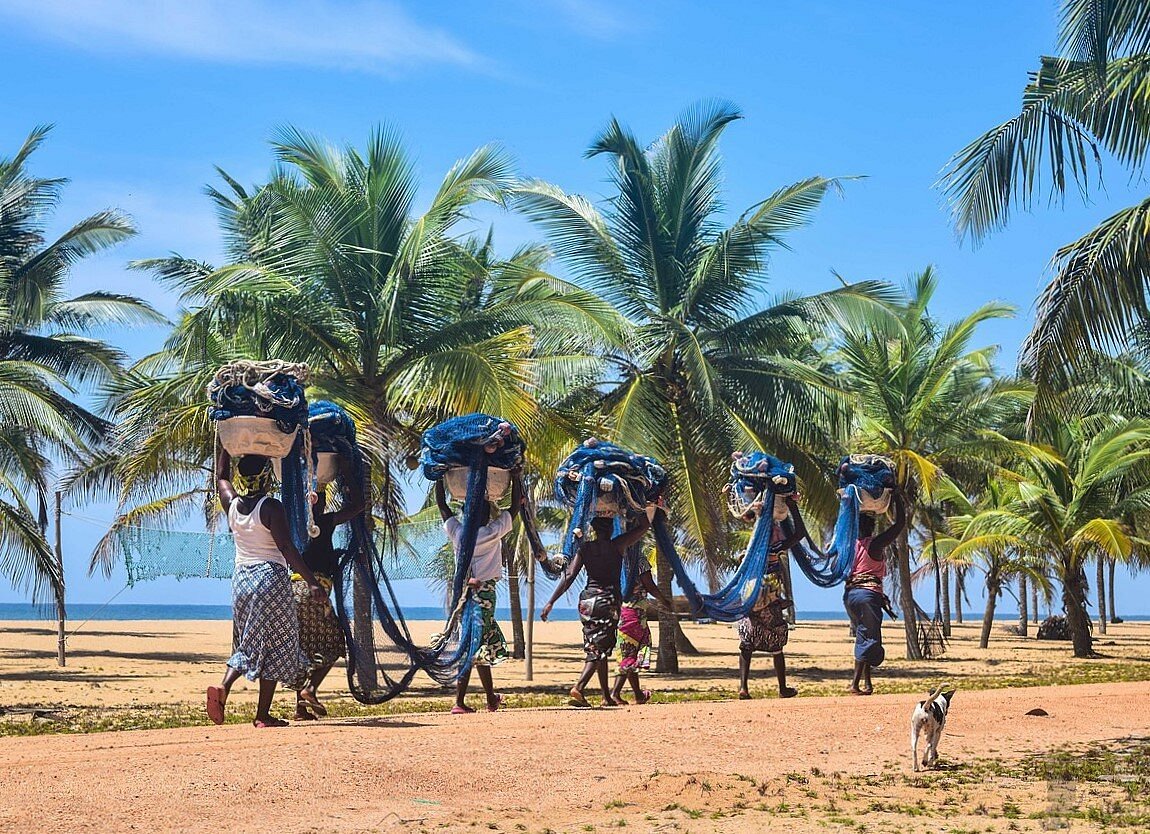Currently, thanks to its magnificent fine sandy beach, the town of Grand-Popo has become a favorite destination on the tourist calendar. It is also an important place of relaxation for the inhabitants of large cities such as Lomé and Cotonou. Indeed, the city is planted with coconut trees and palm trees which make it imperatively exotic. You can also find in the city, vegetation of marine species such as: grasses, mangroves, rushes, etc. Regarding animal species, the small town is full of rodents, snakes characteristic of wetlands and birds. Without forgetting that it is best known for its fish species of marine origin, including sea turtles. Apart from the natural aspects of the city, there are also some pleasant places to visit such as: the Avlo peninsula, the voodoo temples on the banks of Mono, the Karo villa and the Bouche du Roy river.
In the Grand-Popo region, you will find the Avlo peninsula located about 5 km between the Gulf of the Atlantic and the Mono River. The landscape leaves you speechless thanks to its breathtaking setting of coconut trees planted on the edge of the beach. On the spot, a wooden footbridge was built to a nearby island, so that the occupants of the island can go to draw fresh water. During your little getaway, you can also enjoy a cast net fishing trip or scavenge crustaceans with blue claws.
After an escape to Avlo, immediately head for the Bouche du Roy . It is a long, almost endless river confluent with the Atlantic Ocean. A fairly calm river corner, the Bouche du Roy is an ideal place for a swim. While you are there, it would also be an opportunity to take a short tour of Gbêkon and discover the activities of the natives.
Apart from the beautiful surrounding places, visitors often tend to visit voodoo temples. Indeed, Grand-Popo is an agglomeration follower of the voodoo religion. On the long bank of the Mono River, you can see many religious buildings. Locals celebrate a voodoo festival every January 10 every year. On the site, the shell of a turtle and the hair have become fetish objects.
To round off your stay in Grand-Popo, discover the Karo villa. It is an institution specializing in Finno-African culture. The house opened its doors to the general public in 2000 and continues to offer free cultural services to the citizens of the city. It also acts towards fishing communities and helps schools.



